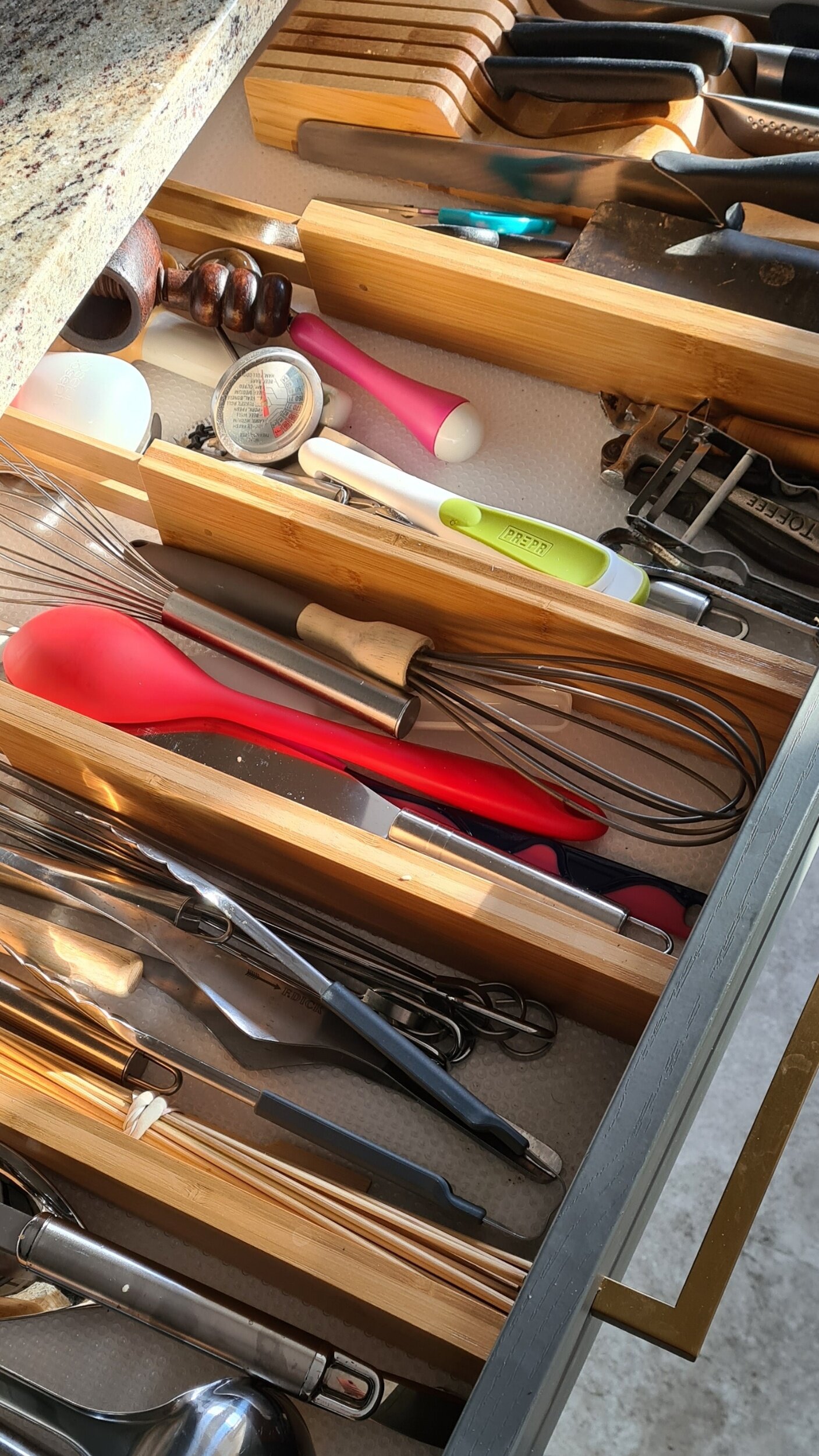How I Organise My Pantry

Happy Tip Tuesday! So whether you are foodie like me or set fire making toast, we all have somewhere in our home where we store food.
In the UK a walk in pantry is not a common sight like in the USA. We tend to either use several kitchen cabinets for pantry space or have a full length pantry cabinet, often with pull out drawers. After years of using different cupboards in different kitchens, I got the opportunity to turn an awkward nook in the new kitchen into a pantry.
I was so excited to finally create a Pinterest worthy pantry, however I knew any systems we put in place needed to function well for us too!
Over the last year I feel like I’ve finally cracked a system to keep it organised and looking pretty. So today I thought I’d share some of my tips.
Take time to plan out what you want to keep in your pantry.
Whether you’re starting with a blank slate and don’t have any shelves or have moved into a place where you only have a couple of small cupboards to use, the first step to organising is always to work out what you want to keep in the space.
In my case, the pantry was a bit of an awkward shape so standard shelves weren't going to work. Therefore I took the time to design the system my husband made specifically for the space.
I knew I wanted to keep food, our back stock, the toaster and the microwave in the space. So we prioritised making sure there was a countertop level shelf, enough upper shelves for all our food items and some deeper lower shelves for a system to keep large items and our back stock in.
In previous kitchens where we only had cupboards to use I tried to work out whether I could split food items by categories. For example in some kitchens I have had a baking cupboard with the food items to bake and the baking trays in it, while in others I have just tried to keep all food items together. I find by thinking about how you want to use your kitchen overall can really help you work out what needs to be in your pantry space.
Remember to only keep to hand what you actually use. An item is only useful if you use it regularly, if not its a specialist item and doesn’t need to be in your precious kitchen storage space.
2. Find storage containers that work for your space.
Everyone has seen the Pinterest perfect pantries with the glass jars, clear plastic storage caddies and wicker baskets. Let’s all admit, they are stunning. However sometimes they are just not practical for your space or budget, and that’s OK. You need to find containers and systems that work for you.
Personally I am one of those people that likes to have most my food in clear containers so I can see what I have and don’t have. I’ve learnt I don’t mind spending 15 to 30 minutes every other week to make sure my glass containers are restocked from our back stock or food shop because for me I’m more likely to use something if I can see it.
I also know there are some prepackaged items I don’t need to have on display such as packets of microwave rice and snack items so I have IKEA storage boxes at the bottom of our pantry for those items.
When I was buying containers it's useful to be aware of what you use alot or a little of. I was aware we go through flours and oats quickly and it’s more cost effective for us to buy large bags of them. Therefore I looked for large plastic tubs that I could put scoops in.
In total I think I have six different types of storage containers I use, some I bought specifically for the space and others I was able to repurpose from elsewhere in my house. I have linked the ones I could find or to something similar below:
3. Catergorise your items and keep like items together.
In my pantry I have a separate shelves for nuts, flours, baking items and grains. I find this just makes it easier to locate items in the pantry.
I also like to put the stuff you use most on the shelves closest to eye level or grab level. For example the countertop height shelf in my pantry has our toaster to one side, while on the other side keep stock cubes bread, potatoes and onions which we grab for on a regular basis.
4. Put back stock items in awkward places.
If all the things you need to grab most are in easy reach, then realistically the ones you need less often like back stock should be in the more awkward to reach places. This helps to keep them out of way from day to day and from loosing items you need more regularly as they can’t be pushed into those awkward spaces. Talking about back stock please remember to rotate through your stock pile on a regular basis! Otherwise its just a waste of food.
I hope these tips help you with your pantry organisation. Are there any you think I’ve missed? If so please leave them in a comment down below!
Ju xx










